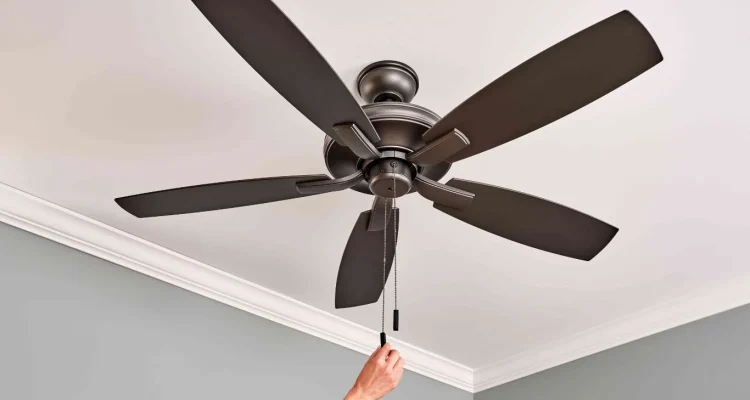Introduction
Understanding the direction of your ceiling fan during winter can significantly impact your comfort and energy bills. Many homeowners are unaware that ceiling fans can be adjusted seasonally to enhance both heating efficiency and overall comfort levels.

Why Direction Matters
In different seasons, the direction of your ceiling fan can either cool or warm your living space:
Summer Mode vs. Winter Mode
Summer Mode: Counter-Clockwise Rotation
During summer, ceiling fans should run in a counter-clockwise direction when viewed from below. This creates a breeze effect that helps to cool the room by circulating air downwards.
Winter Mode: Clockwise Rotation
In winter, your ceiling fan should operate in a clockwise direction. This gentle updraft helps to redistribute warm air that naturally rises to the ceiling, pushing it back down along the walls and into the living space.
Benefits of Using Ceiling Fans in Winter
Improved Heating Efficiency
By running your ceiling fan in winter mode, you can improve the efficiency of your heating system. This circulation of warm air can make your room feel warmer without needing to increase the thermostat setting.
Redistribution of Warm Air
Hot air naturally rises towards the ceiling. A clockwise ceiling fan rotation gently pushes this air back down, ensuring that it doesn’t accumulate unnecessarily near the ceiling where it’s less useful.
Reduced Heating Costs
With improved circulation and redistribution of warm air, you can potentially lower your heating bills. Using a ceiling fan allows you to maintain comfortable temperatures while reducing reliance on your heating system.
How to Change the Ceiling Fan Direction
Identifying Fan Direction Switch
Most ceiling fans have a small switch on the motor housing that controls the fan’s direction. This switch typically changes the direction of the fan blades between clockwise and counter-clockwise rotations.
Step-by-Step Guide for Reversing Direction
- Turn Off the Fan: Ensure the ceiling fan is powered off before attempting to change its direction.
- Locate the Switch: Find the direction switch usually located on the fan’s motor housing.
- Adjust the Switch: Flip the switch to change the rotation direction from summer to winter mode or vice versa.
Factors to Consider Before Changing Fan Direction
Ceiling Height and Blade Pitch
Ceiling height and blade pitch can affect how effectively the fan moves air. Adjust the fan’s speed and direction according to your room’s dimensions to optimize airflow.
Room Size and Layout
Consider the size and layout of the room. Larger rooms may require ceiling fans with longer blades for optimal air circulation, especially in winter when efficient heat distribution is crucial.
Common Myths About Ceiling Fan Direction in Winter
Myth: Fans Should Always Be Off in Winter
Some believe that ceiling fans are only useful in summer. In reality, using them in winter mode can improve heating efficiency.
Myth: Ceiling Fans Only Work in Summer
Ceiling fans are designed to enhance air circulation year-round. In winter, they play a crucial role in improving comfort and reducing energy costs.
Choosing the Right Ceiling Fan for Winter Use
Optimal Blade Length and Material
Choose ceiling fans with blades of appropriate length for your room size. Consider materials that balance durability and aesthetics.
Energy-Efficient Models
Look for Energy Star rated ceiling fans that consume less electricity without compromising performance. These models can help you save on energy costs throughout the year.
FAQs About The Ceiling Fan Turn in Winter
Should I run my ceiling fan in winter?
Running your ceiling fan in winter can help redistribute warm air and reduce heating costs.
Can I use the same ceiling fan in both summer and winter?
Yes, most ceiling fans are designed for year-round use. Simply adjust the direction of the fan blades as needed.
How do I know if my ceiling fan is in winter mode?
In winter mode, your ceiling fan should rotate clockwise when viewed from below.
Will running my ceiling fan in winter mode make the room colder?
No, running your ceiling fan in winter mode actually helps to redistribute warm air and can make your room feel warmer.
Can ceiling fans replace heating systems in winter?
Ceiling fans enhance heating efficiency but are not a substitute for a heating system. They complement heating systems by improving air circulation.
Conclusion
Adjusting your ceiling fan’s direction in winter can significantly improve your home’s comfort and energy efficiency. By simply flipping a switch, you can enhance heat distribution and reduce heating costs.


Congratulation!